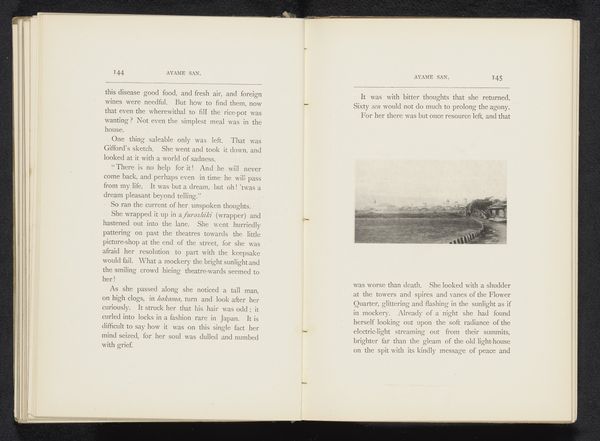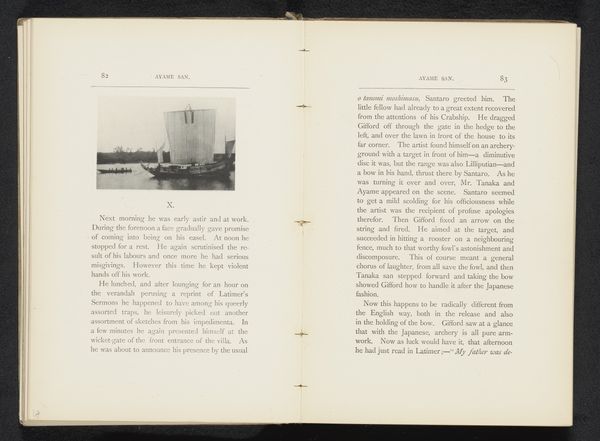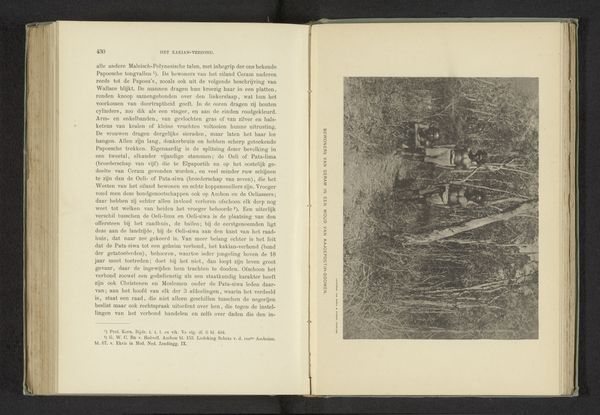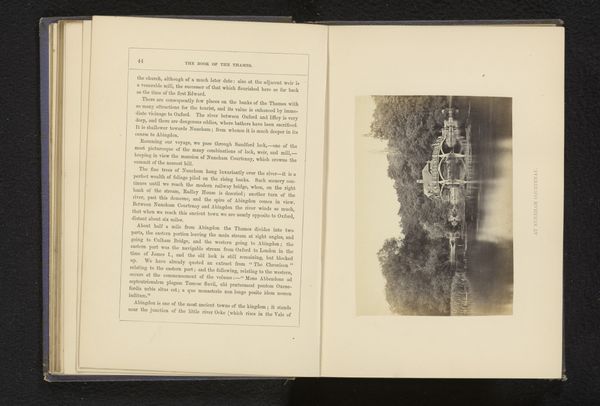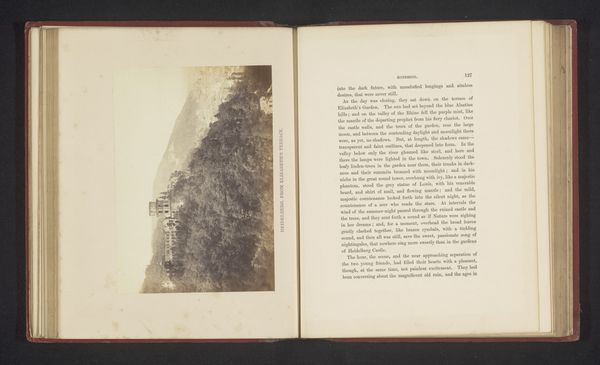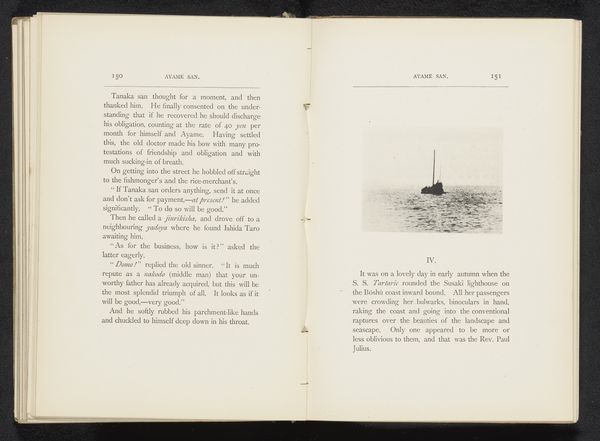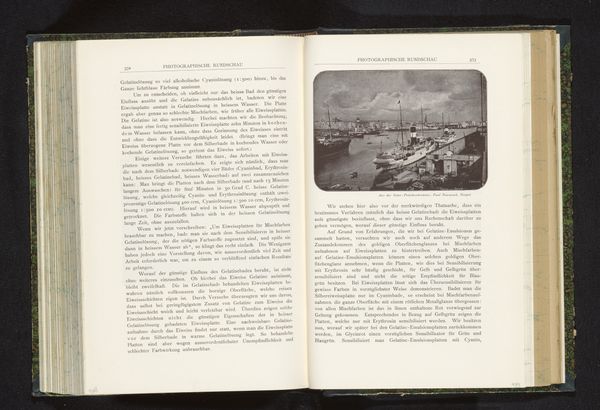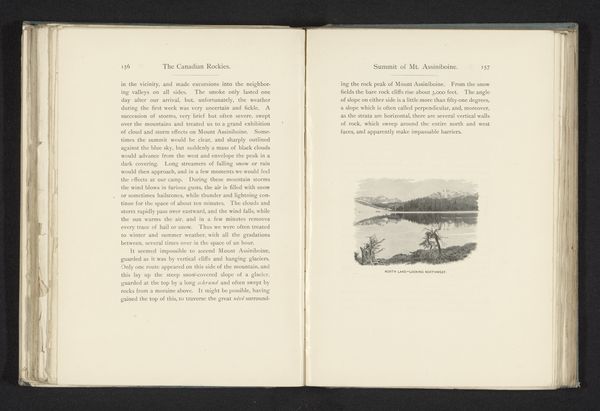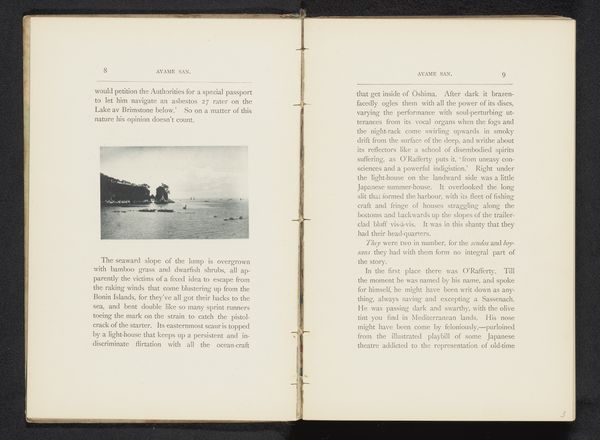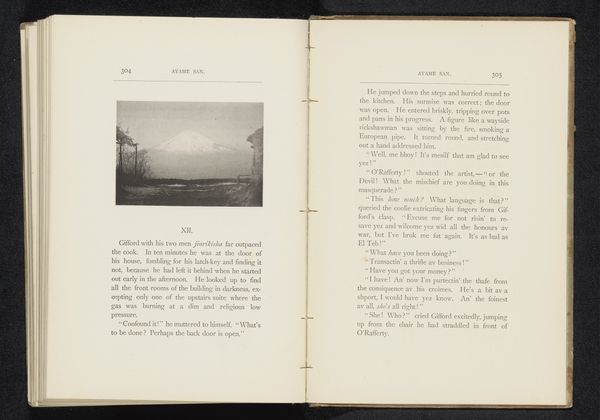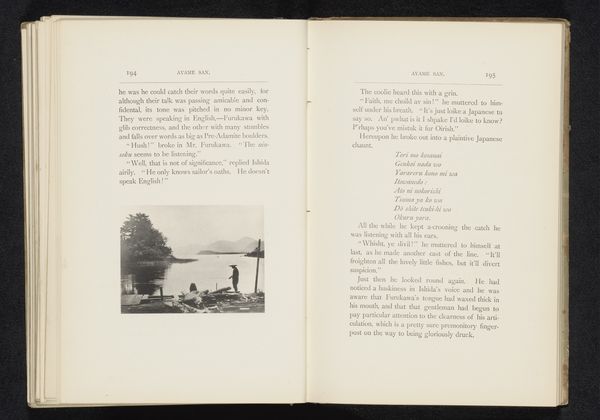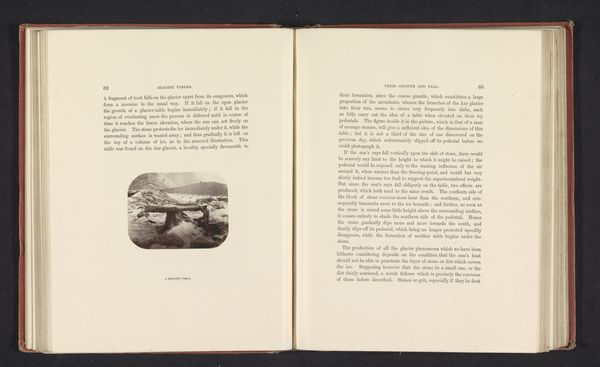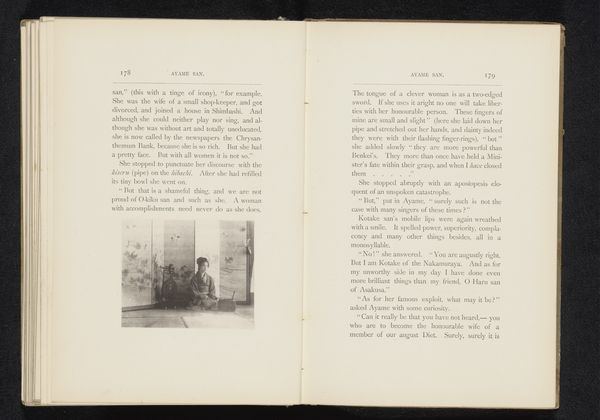
Gezicht op (vermoedelijk) de helling van een vulkaan te Japan before 1892
0:00
0:00
gelatin-silver-print, photography, gelatin-silver-print
#
script typeface
#
aged paper
#
gelatin-silver-print
#
landscape
#
photography
#
hand-drawn typeface
#
gelatin-silver-print
#
thick font
#
handwritten font
#
golden font
#
classical type
#
thin font
#
historical font
#
small font
Dimensions: height 68 mm, width 84 mm
Copyright: Rijks Museum: Open Domain
This photograph of what is thought to be a volcano in Japan was taken by William Kinnimond Burton in the late 19th century. Burton, a pioneer in photography and engineering, has captured the slopes of the volcano, shrouded in mist and smoke. The image is a gelatin silver print, a process that allowed for greater detail and tonal range than earlier photographic methods. This particular print is mounted in a book alongside text. The use of photography as a medium is important here. It speaks to a shift in visual culture brought about by industrial advancements. Photography, unlike painting or sculpture, could capture a moment with relative ease and accuracy, democratizing image-making and challenging traditional art forms. Consider the labor involved: from the mining of silver for the photographic emulsion to the industrial production of cameras and printing presses. The photograph encapsulates how new materials and technologies influence what and how we see, blurring the lines between art, science, and industry.
Comments
No comments
Be the first to comment and join the conversation on the ultimate creative platform.
